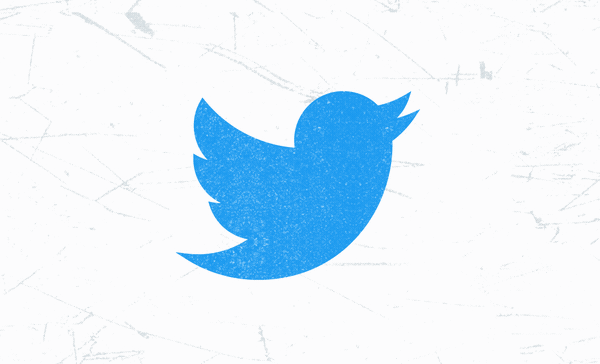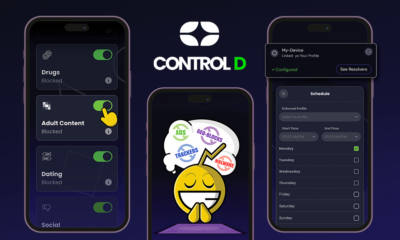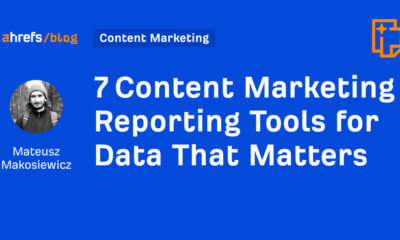SOCIAL
Elon Musk’s Team Asks for More Data to Complete Assessment of Twitter Bots

Okay, let’s just check in on the latest with the Twitter/Elon Musk takeover saga, and where things are placed to close out the week.
According to the latest reports, Musk’s team recently asked Twitter for more tweet info, in order to help it make an accurate assessment of bot activity in the app. This comes after Musk questioned Twitter’s claim that bots and fake accounts make up only 5% of its active user base, and said that his Twitter takeover deal could not go ahead unless Twitter could produce more evidence to support this figure.
Which Twitter did, by providing Musk with access to its ‘full firehose’ of tweets over a given period, which it shared with Musk’s team back on June 8th. Musk’s group has now had that data for a couple of weeks, but this week, it said that this info is not enough to go on, and that it needs even more insight from Twitter to make its judgment.
And after initially resisting calls for more data access, Twitter has now reportedly relented and handed over more tweet data access to Musk’s team.
Which may or may not be a concern, depending on how you see it.
In its initial data dump, Twitter reportedly gave Musk’s team info on:
- Total user tweets (within a given time period)
- Data on which devices were used
As noted, Musk’s team says that this has not provided it with the insight that it needs to conduct an accurate analysis of potential bot activity, so Twitter has now provided Musk with more ‘real-time API data’.
It’s not clear whether that means that Twitter has provided everything that its API systems can provide, but that could mean that Musk’s team can now access:
- Real-time info on tweet text and visual elements/attachments
- Data on retweets, replies, and quote Tweets for each
- Data on tweet author, mentioned users, tagged locations, hashtag and cashtag symbols, etc
- Date, time, location, device info
That should satisfy any analytical needs to uncover potential bot trends, and get a better handle on Twitter’s bot problem, though it also means that Musk has all your tweet info – which, again, it’s worth noting, Twitter up till now had been hesitant to provide.
I’m sure it’s fine. Musk’s team is beholden to disclosure laws around such, so it’s not like they can do anything much with that info anyway, in a legal sense. But the idea that the sometimes erratic Elon Musk now has all the tweets could be a little concerning for some.
But Twitter likely had to provide what it can, and if Musk is going to become CEO of the app soon anyway, he’s going to have access to all of that data either way.
But still, given Musk and Co’s past history of undermining and attacking critics, sacking trouble maker employees and digging up potential dirt on rivals, it sits a little uneasy.
Should be fine. No problems – no need to go deleting all your DMs (which are likely not included in the data that Twitter has provided at this stage).
According to reports, Musk’s team says that it now has the info it needs to make its assessment of bot activity, which should see the deal move forward (or not) sometime soon.
Of course, no one knows what exactly is going to happen next, and whether Musk’s team will look to renegotiate, or even back out of the deal entirely as a result of its bot analysis. But it does seem like, one way or another, Musk will be forced to go ahead with the $44 billion transaction, with Twitter’s past bot reporting methodology already accepted by the SEC, giving it legal grounding to argue that it’s acted in good faith, regardless of what Musk’s team finds.
The next steps then, according to Musk, would be securing debt financing and gaining Twitter shareholder approval, clearing the last hurdles for Musk to change the app’s name to ‘Telsla Social’, and add a million references to ‘420’ into the platforms various terms and conditions.
Because of the memes, because weed jokes are still funny to the richest man in the world – because he vacillates between inspired genius and a massive nerd who now gets to play out some fantasy of being cool.
Or something. Who knows what goes on in Elon Musk’s head – which is also why most are hesitant to bet against him, as nobody knows if and how he might be able to fix Twitter, and whether this is a great investment or a massive disaster.
It seems like we may soon find out. Maybe. Who knows. Either way, the memes should be great.
SOCIAL
Snapchat Explores New Messaging Retention Feature: A Game-Changer or Risky Move?

In a recent announcement, Snapchat revealed a groundbreaking update that challenges its traditional design ethos. The platform is experimenting with an option that allows users to defy the 24-hour auto-delete rule, a feature synonymous with Snapchat’s ephemeral messaging model.
The proposed change aims to introduce a “Never delete” option in messaging retention settings, aligning Snapchat more closely with conventional messaging apps. While this move may blur Snapchat’s distinctive selling point, Snap appears convinced of its necessity.
According to Snap, the decision stems from user feedback and a commitment to innovation based on user needs. The company aims to provide greater flexibility and control over conversations, catering to the preferences of its community.
Currently undergoing trials in select markets, the new feature empowers users to adjust retention settings on a conversation-by-conversation basis. Flexibility remains paramount, with participants able to modify settings within chats and receive in-chat notifications to ensure transparency.
Snapchat underscores that the default auto-delete feature will persist, reinforcing its design philosophy centered on ephemerality. However, with the app gaining traction as a primary messaging platform, the option offers users a means to preserve longer chat histories.
The update marks a pivotal moment for Snapchat, renowned for its disappearing message premise, especially popular among younger demographics. Retaining this focus has been pivotal to Snapchat’s identity, but the shift suggests a broader strategy aimed at diversifying its user base.
This strategy may appeal particularly to older demographics, potentially extending Snapchat’s relevance as users age. By emulating features of conventional messaging platforms, Snapchat seeks to enhance its appeal and broaden its reach.
Yet, the introduction of message retention poses questions about Snapchat’s uniqueness. While addressing user demands, the risk of diluting Snapchat’s distinctiveness looms large.
As Snapchat ventures into uncharted territory, the outcome of this experiment remains uncertain. Will message retention propel Snapchat to new heights, or will it compromise the platform’s uniqueness?
Only time will tell.
SOCIAL
Catering to specific audience boosts your business, says accountant turned coach

While it is tempting to try to appeal to a broad audience, the founder of alcohol-free coaching service Just the Tonic, Sandra Parker, believes the best thing you can do for your business is focus on your niche. Here’s how she did just that.
When running a business, reaching out to as many clients as possible can be tempting. But it also risks making your marketing “too generic,” warns Sandra Parker, the founder of Just The Tonic Coaching.
“From the very start of my business, I knew exactly who I could help and who I couldn’t,” Parker told My Biggest Lessons.
Parker struggled with alcohol dependence as a young professional. Today, her business targets high-achieving individuals who face challenges similar to those she had early in her career.
“I understand their frustrations, I understand their fears, and I understand their coping mechanisms and the stories they’re telling themselves,” Parker said. “Because of that, I’m able to market very effectively, to speak in a language that they understand, and am able to reach them.”Â
“I believe that it’s really important that you know exactly who your customer or your client is, and you target them, and you resist the temptation to make your marketing too generic to try and reach everyone,” she explained.
“If you speak specifically to your target clients, you will reach them, and I believe that’s the way that you’re going to be more successful.
Watch the video for more of Sandra Parker’s biggest lessons.
SOCIAL
Instagram Tests Live-Stream Games to Enhance Engagement

Instagram’s testing out some new options to help spice up your live-streams in the app, with some live broadcasters now able to select a game that they can play with viewers in-stream.
As you can see in these example screens, posted by Ahmed Ghanem, some creators now have the option to play either “This or That”, a question and answer prompt that you can share with your viewers, or “Trivia”, to generate more engagement within your IG live-streams.
That could be a simple way to spark more conversation and interaction, which could then lead into further engagement opportunities from your live audience.
Meta’s been exploring more ways to make live-streaming a bigger consideration for IG creators, with a view to live-streams potentially catching on with more users.
That includes the gradual expansion of its “Stars” live-stream donation program, giving more creators in more regions a means to accept donations from live-stream viewers, while back in December, Instagram also added some new options to make it easier to go live using third-party tools via desktop PCs.
Live streaming has been a major shift in China, where shopping live-streams, in particular, have led to massive opportunities for streaming platforms. They haven’t caught on in the same way in Western regions, but as TikTok and YouTube look to push live-stream adoption, there is still a chance that they will become a much bigger element in future.
Which is why IG is also trying to stay in touch, and add more ways for its creators to engage via streams. Live-stream games is another element within this, which could make this a better community-building, and potentially sales-driving option.
We’ve asked Instagram for more information on this test, and we’ll update this post if/when we hear back.
-

 PPC7 days ago
PPC7 days ago19 Best SEO Tools in 2024 (For Every Use Case)
-
SEARCHENGINES6 days ago
Daily Search Forum Recap: April 19, 2024
-
SEARCHENGINES7 days ago
Daily Search Forum Recap: April 18, 2024
-

 WORDPRESS6 days ago
WORDPRESS6 days agoHow to Make $5000 of Passive Income Every Month in WordPress
-

 SEO7 days ago
SEO7 days ago25 WordPress Alternatives Best For SEO
-

 WORDPRESS5 days ago
WORDPRESS5 days ago13 Best HubSpot Alternatives for 2024 (Free + Paid)
-

 WORDPRESS6 days ago
WORDPRESS6 days ago7 Best WooCommerce Points and Rewards Plugins (Free & Paid)
-

 MARKETING6 days ago
MARKETING6 days agoBattling for Attention in the 2024 Election Year Media Frenzy
















You must be logged in to post a comment Login